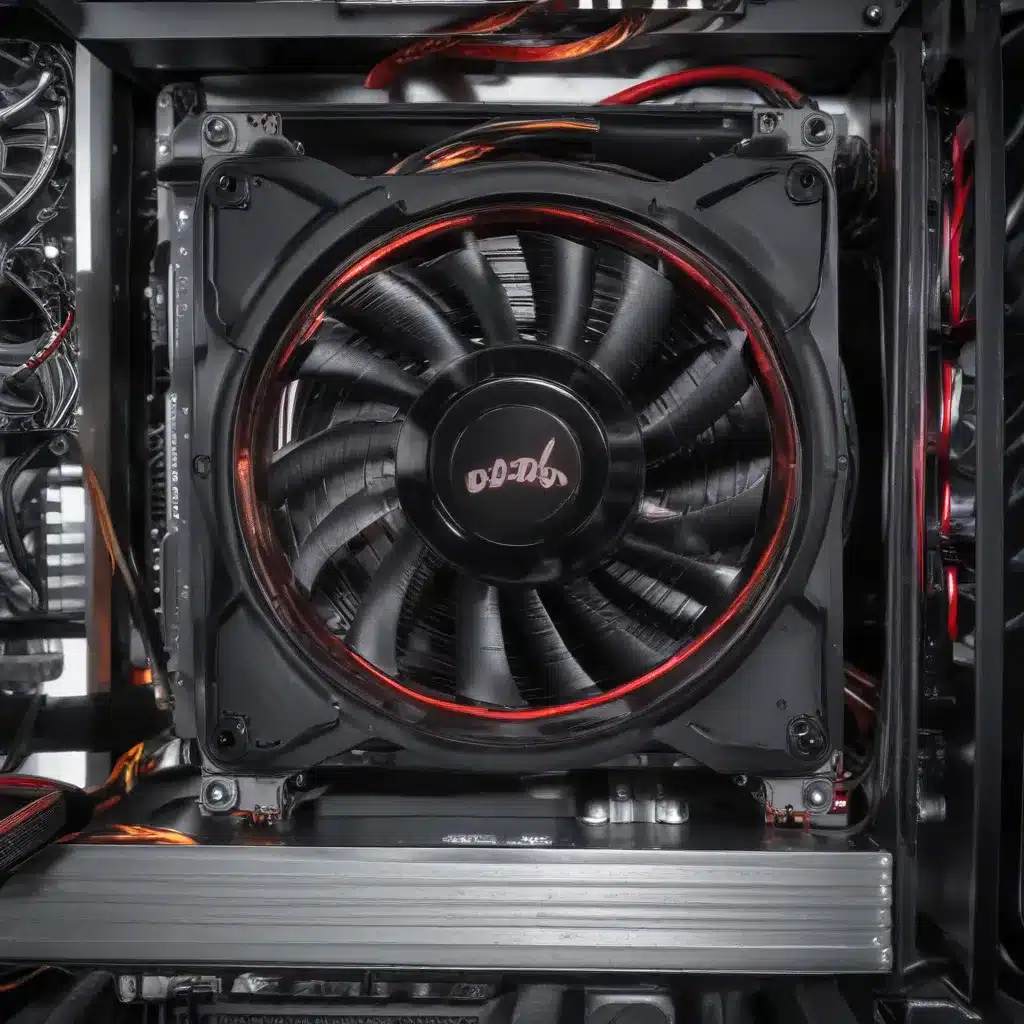
As an experienced IT consultant, I’ve seen my fair share of desktop and gaming PC overheating problems. Overheating can be a real menace, leading to system crashes, performance throttling, and even permanent component damage. However, with the right troubleshooting steps and cooling solutions, these issues can be effectively resolved.
In this comprehensive guide, we’ll dive deep into the causes of overheating, explore the symptoms to look out for, and discuss practical cooling strategies to keep your rigs running cool and smooth – whether you’re a casual user or a dedicated gamer.
Computer Hardware
At the heart of any desktop or gaming PC are critical hardware components that generate heat during operation. Understanding the role of these elements and how they contribute to overheating is the first step in finding a lasting solution.
Desktop Components
Processors (CPUs): The central processing unit (CPU) is often the primary culprit when it comes to overheating. As processors become more powerful, they also generate more heat, especially during intense workloads like gaming or rendering. Inadequate CPU cooling can quickly lead to thermal throttling and system crashes.
Motherboards: While not directly responsible for heat generation, the motherboard plays a crucial role in heat management. Poorly designed or outdated motherboards may struggle to effectively dissipate heat from the CPU and other components.
Power Supplies: An underpowered or malfunctioning power supply can also contribute to overheating issues. If the PSU is unable to provide sufficient and stable power, it can put strain on other components, leading to increased heat buildup.
Gaming PC Components
Graphics Cards (GPUs): High-performance graphics cards, essential for gaming, are notorious heat producers. Modern GPUs pack an incredible amount of processing power, which translates to significant thermal output, especially during demanding gaming sessions.
CPU Cooling Solutions: The effectiveness of the CPU’s cooling solution, be it a traditional heatsink and fan or a liquid cooling system, plays a critical role in maintaining optimal temperatures.
High-Performance Memory: While not as significant as the CPU and GPU, even the system’s memory (RAM) can contribute to overall heat generation, particularly when running at higher speeds or under heavy workloads.
Thermal Management
Understanding the causes and symptoms of overheating is the first step in resolving these issues effectively.
Causes of Overheating
Inadequate Airflow: Restricted or insufficient airflow within the computer case can prevent hot air from being efficiently expelled, leading to a buildup of heat.
Excessive Heat Generation: As mentioned earlier, powerful components like the CPU and GPU can generate significant amounts of heat, especially under heavy loads.
Poor Cooling System Design: If the computer’s cooling system, including fans, heatsinks, and airflow paths, is not optimized for the hardware configuration, it can struggle to keep temperatures in check.
Symptoms of Overheating
System Crashes and Shutdowns: One of the most obvious signs of overheating is sudden, unexpected system crashes or forced shutdowns. When temperatures rise too high, the computer’s safety mechanisms kick in to prevent permanent damage.
Reduced Performance: Overheating can also lead to performance throttling, where the CPU or GPU automatically reduces their clock speeds to generate less heat and avoid damage.
Component Damage: In extreme cases, prolonged exposure to high temperatures can cause irreversible damage to sensitive computer components, such as the CPU, GPU, or even the motherboard.
Cooling Solutions
To combat overheating, a multifaceted approach involving both passive and active cooling solutions is often required.
Passive Cooling
Heat Sinks: Effective heatsinks, made of materials like aluminum or copper, are designed to dissipate heat from the CPU and other components, reducing their operating temperatures.
Thermal Pads and Paste: Proper application of high-quality thermal pads and paste between the CPU/GPU and their respective heatsinks can significantly improve heat transfer and cooling efficiency.
Active Cooling
Case Fans: Strategically placed and well-configured case fans are crucial for maintaining optimal airflow and expelling hot air from the computer’s interior.
CPU and GPU Fans: The stock or aftermarket fans that come with the CPU and GPU play a vital role in keeping these components cool during heavy usage.
Liquid Cooling Systems: For the ultimate in cooling performance, custom liquid cooling setups can provide superior heat dissipation compared to traditional air-based solutions.
Optimizing Airflow
Ensuring efficient airflow within the computer case is a crucial aspect of thermal management.
Case Design and Ventilation
Efficient Air Intake and Exhaust: The case design should prioritize the smooth flow of air, with strategic placement of intake and exhaust vents to create a positive pressure environment.
Proper Fan Placement: Fans should be positioned to create a clear airflow path, with intake fans drawing in cool air and exhaust fans pushing hot air out of the case.
Thermal Monitoring and Control
Temperature Sensors: Monitoring the temperatures of key components, such as the CPU and GPU, using software tools can provide valuable insights into the system’s thermal performance.
Fan Speed Regulation: Adjusting the speed of case, CPU, and GPU fans based on temperature readings can help maintain optimal cooling without excessive noise.
Whether you’re troubleshooting an overheating desktop or fine-tuning your high-performance gaming PC, these cooling strategies can help you keep your system running at its best. Remember, prevention is better than cure, so be proactive in maintaining a well-ventilated and properly cooled computer environment.
For any further assistance or specialized IT solutions, feel free to reach out to our team at IT Fix – we’re always here to help!












